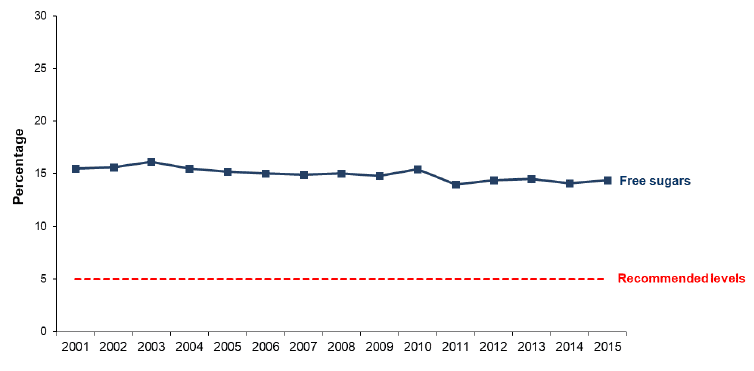Obesity indicators 2018
Latest results against the obesity indicator framework originally developed to monitor progress against our Prevention of Obesity Route Map (2010). The Route Map has now been overtaken by the Diet and Healthy Weight Delivery Plan and Active Scotland Delivery Plan published in summer 2018.
This document is part of a collection
Free sugars
Source: Food Standards Scotland
Latest Results[16]
- In 2015, the percentage of food energy contributed by free sugars was 14.4%. This has decreased from 15.5% in 2001.
- Intakes remain higher than the Scottish Dietary Goal of less than 5% of energy.[17]
Figure 7. Proportion of household food energy from added sugars, 2001-2015

Source:
- Food Standards Scotland commissioned Scottish specific analysis of population level data from the ONS Living Cost and Food Survey.
Equalities:
Information is collected on differences in food and nutrient intake by deprivation (using the Scottish Index of Multiple Deprivation (SIMD)).
Geography available: Population level information is collected on differences in food and nutrient intake by urban/rural classification.
Rationale for including free sugars:
These data are useful to monitor change in the proportion of adults and children consuming energy dense foods. As noted above, prevalence of obesity indicates that energy intakes currently exceed energy requirements with associated health problems.
Factors influencing free sugars:
- Availability, cost, and access to different food types.
Contact
Email: Xanthippi Gounari
There is a problem
Thanks for your feedback